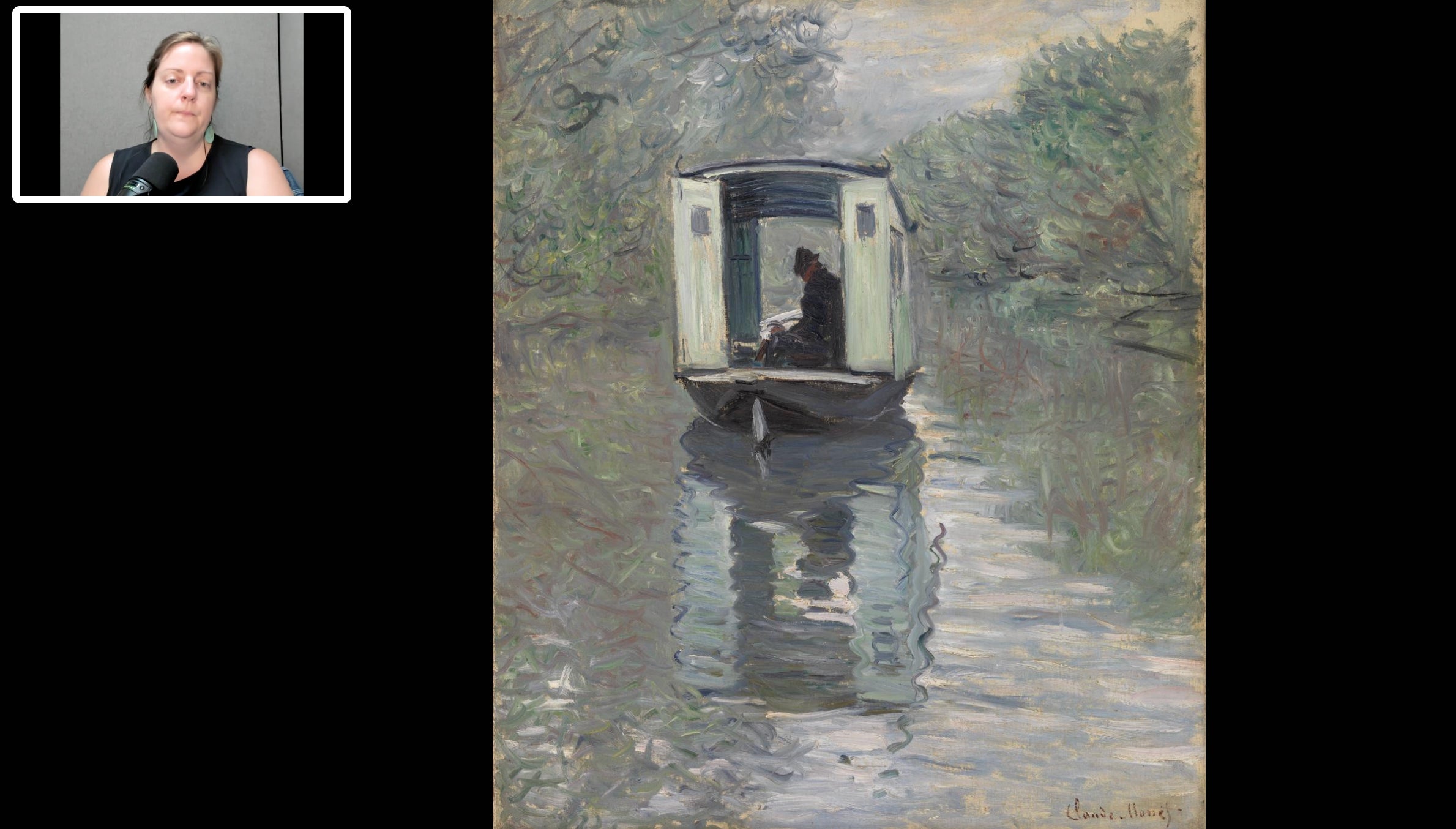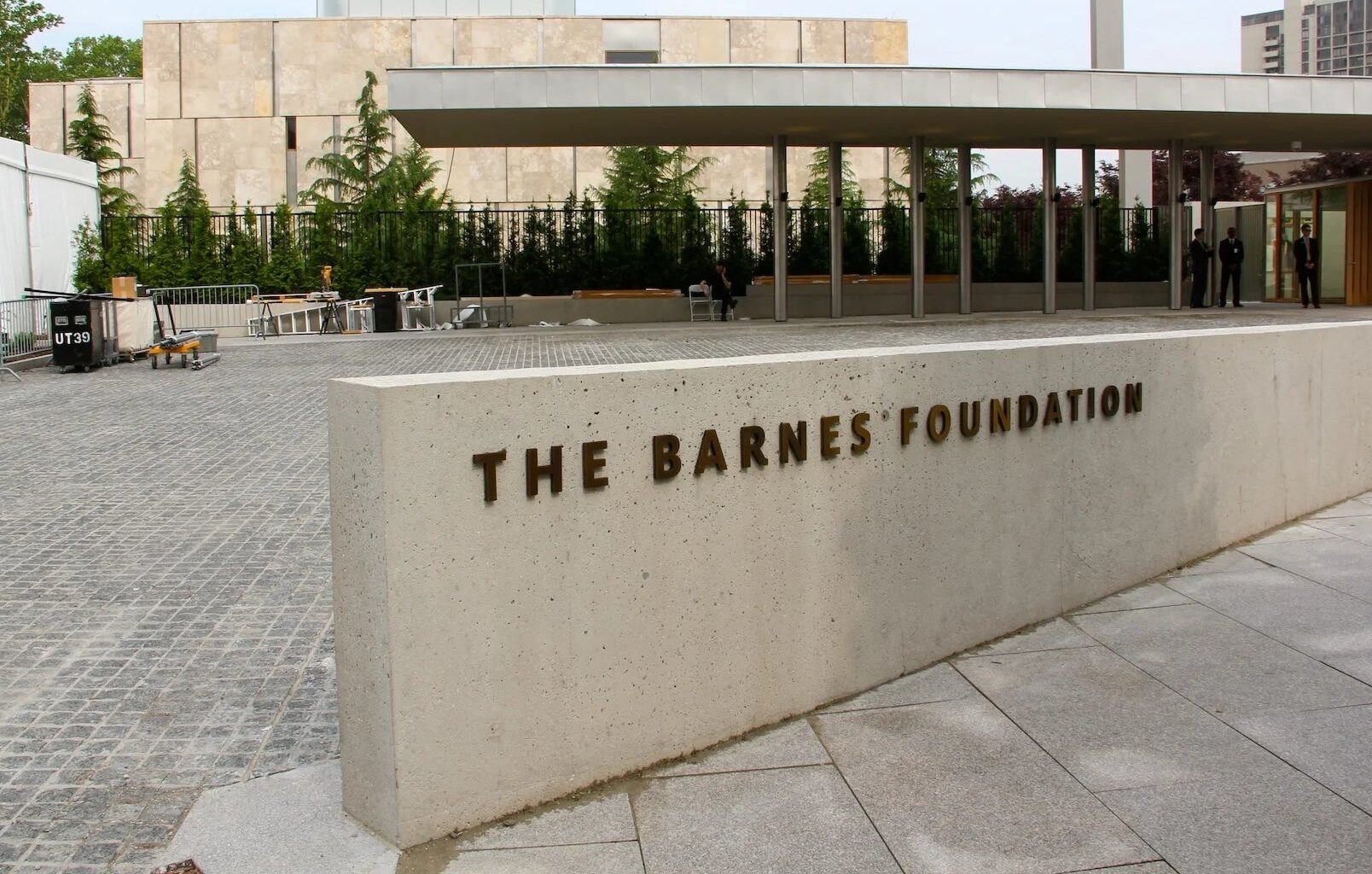The VXP is basically a split screen with the instructor live streaming in one window while the other is a dynamic view of the object being discussed — a painting, artifact, manuscript, etc. — which the student can navigate in real time. The technology also works with classes where the instructor’s presentation is pre-recorded, but students can still closely interact with the material however they choose.
“If you think about watching a YouTube video, that’s a very passive experience,” Carey said. “In the VXP, even with our pre-recorded, asynchronous material, you can be in that explore mode while watching the recordings. You can zoom around, check out other things.”
 Kaelin Jewell, senior instructor for adult education at the Barnes, leads a session about Claude Monet’s 1876 painting ”The Studio Boat.” (Barnes Foundation)
Kaelin Jewell, senior instructor for adult education at the Barnes, leads a session about Claude Monet’s 1876 painting ”The Studio Boat.” (Barnes Foundation)
The technology is aligned with the Barnes Foundation’s educational philosophy that was established over a century ago by its founder Dr. Albert Barnes and philosopher John Dewey, with whom Barnes had a close association.
“Dewey argued that the most meaningful learning happens when students participate actively in the process,” said Martha Lucy, the Barnes’ deputy director for research, interpretation, and education. “He and Dr. Albert Barnes both believed that a work of art is something to be experienced and discovered by the individual learner — not something that you just passively receive information about.”
Licensing its technology to other institutions is part of the Barnes Foundation’s recent push to expand its operations and services beyond the legacy of its founder and his renowned art collection.
Recently, the Barnes became the administrative operation partner of the Pew Center for Arts and Heritage. In September, when the Calder Gardens opens to the public on the Parkway, the Barnes will manage daily operations of the cultural center based on the work of Alexander Calder.
“The Barnes sees itself as an innovator and incubator for ideas that can serve us, and can also serve the field,” Carey said. “We think this expansion of business models allow us to further our educational mission while also making ourselves and other institutions more financially sustainable.”
